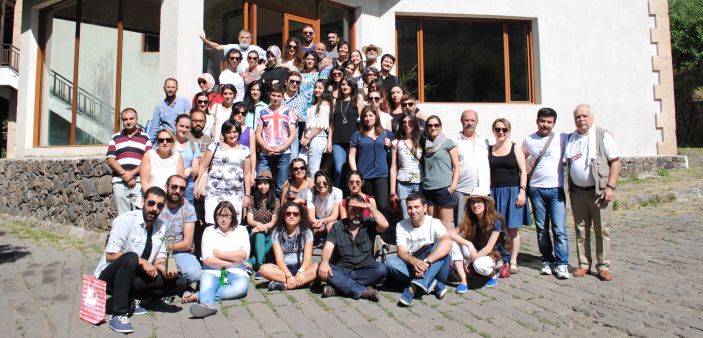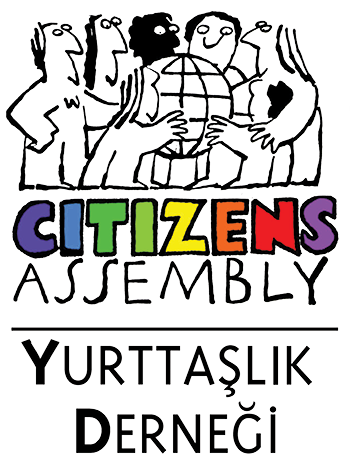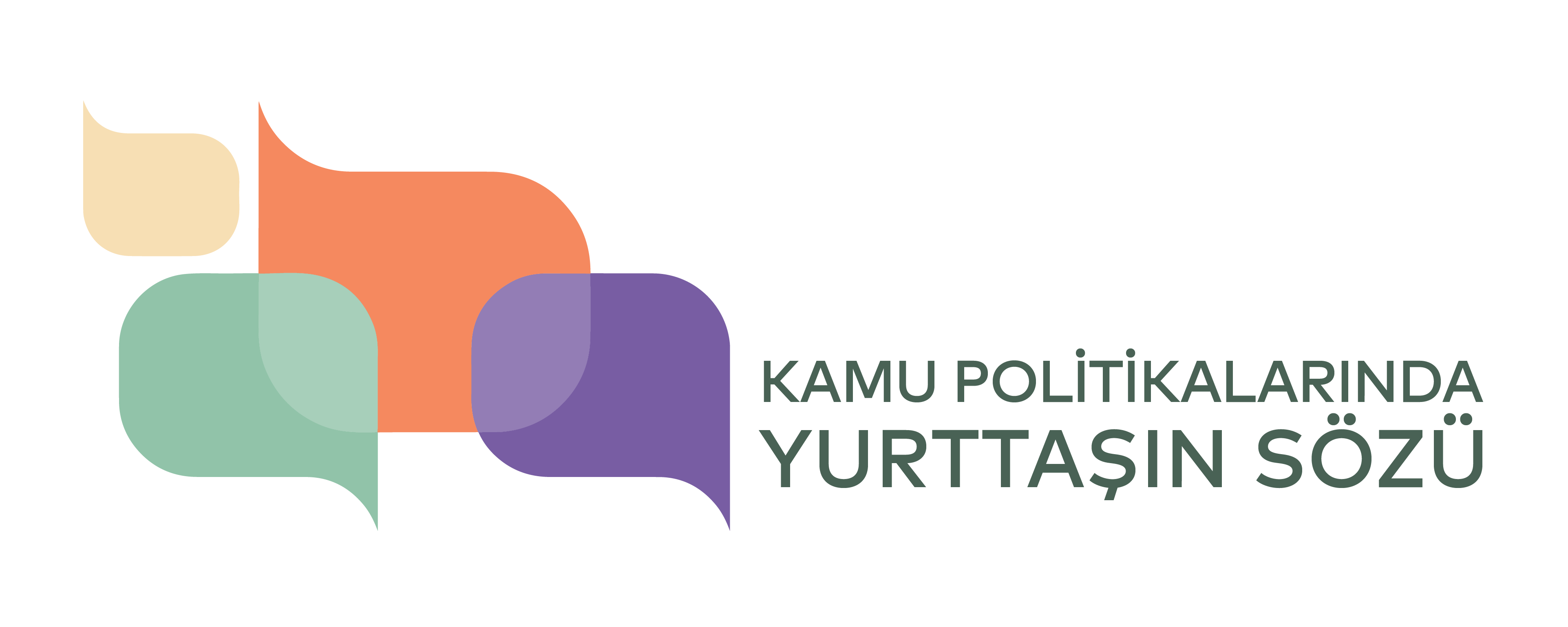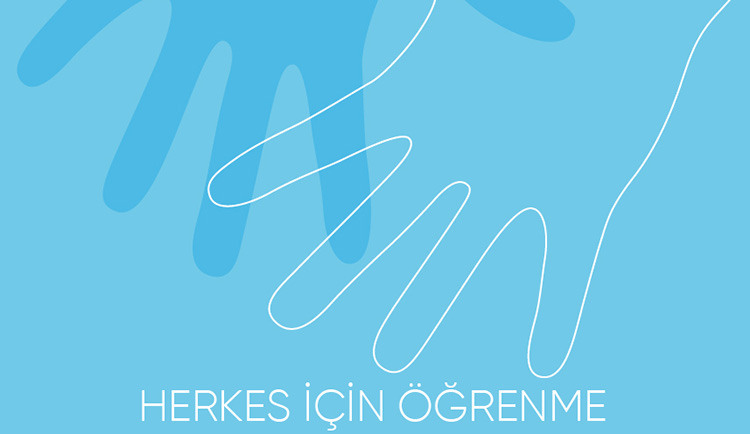
Two sides of Ararat met
The group of 20 people which consisted of teachers and students from Turkey was in Armenia from the 9th to the 16th of August for the Yavas-Gamats Summer School organised by Helsinki Citizens’ Assembly Istanbul Office (Helsinki Yurttaşlar Derneği, hYd) and Helsinki Citizens' Assembly Vanadzor Office. Yavas-Gamats is a summer school which is participated by educators from both countries in order to build trust between the societies of Turkey and Armenia and to support the reconciliation process. It was organised in Kocaeli last year for the first time with the participation of teachers and prospective teachers from Turkey and Armenia. This year, the second summer school was organised. 20 educators from Armenia participated in the summer school as well. Since it is very important how teachers, who are to shape the child approach to the peace process, equality, ethnic identities and human rights, educators are preferred as participators of the project. The participators of both countries met and began to become familiar in Aghveran near Yerevan on Sunday, 9th of August. There were Armenian, Turkish, Kurdish, Zaza, Arabic, Yazidi young people among the participants. A part of the participants consisted of class teachers in addition to teachers of various branches and prospective teachers. Academicians, teachers, journalists, architects, authors and film makers from Turkey and Armenia participated in the summer school with their presentations.
Presentations from Turkey and Armenia
In the summer school, hYd Member of Board Prof. Murat Belge and journalist and author Vahram Martirosyan gave the talks about ‘Armenians in the Turkish Literature’ and ‘Turks in the Armenian Literature’, respectively. The change process of the texts about Armenians in the Turkish Literature was observed in the presentation by Murat Belge. On the other hand, Vahram Martirosyan talked about the Armenian-Turkish relations in the books of Armenian authors such as Charents, Abovian and Yervant Odian. Zakarya Mildanoğlu told about their churches, cultures, neighbourhoods and the remainings while talking about the cities in which Armenians lived in Anatolia, in his presentation ‘Traces of Armenian Culture in Anatolia’.
Throughout the presentation, the participants from Armenia and Turkey talked about the regions in which their ancestors lived and found out some common grounds. Mildanoğlu also told about the Armenian press beginning with Aztarar which was published in India in 1794 and happens to be the first newspaper in Armenian, to the year 2000 in his presentation ‘History of the Armenian Press and Periodicals’. Asst. Prof. Burak Onaran from Mimar Sinan University Sociology Department talked about the inconsistencies of the history told in schoolbooks in his presentation ‘Historiography as a Vocation’. He pointed out that the state history consisted of archives but the matter that they were archived by whom and according to which criteria proved a serious handicap.
In her presentation ‘The Role of Literature in Conflict Resolution’, journalist and author Emine Uçak, told of what a significant role literature bears in telling things and it can make us feel the pain of other people as if our own in addition to the books featuring the Armenian Genocide. On the other hand, Murat Sürmeli organised a work shop about how to enable and dynamise the use of technology in lessons. Academic Mesrop Harutyunyan and journalist and author Ümit Kıvanç made presentations regarding media, how to dynamise media and enable it to be understood ‘‘right’’. Mutlu Öztürk also made a presentation titled ‘Discrimination based on Ethnicity and Religion; Speaking of the Hard Cases in Class’’.
Film Screenings
The films ‘Kırlangıcın Yuvası’, ‘Portakalın Uykusu’, ‘The Black Massacre’ and ‘Ziazan’ were screened and discussed in the evenings.
The participants were divided into five groups consisting of people from Turkey and Armenia and each group prepared a bulletin about the summer school one by one. On the last day of training, the groups made entertaining presentations all together. A group prepared steak tartar a la turca and the Armenian dish kerakus. Similar hollidays of the different cultures were told, songs in Armenian and Turkish were sung, some videos were shut.
Finally, Hıdrellez was organised, wishes were wrote down on pieces of paper, the papers were left into the river near the hotel, and Vardavar which is one of the first five hollidays of Armenians was performed. In addition to the presentations within the programme, we saw how human affairs were important as well. In the closing speech on Friday, Artur Sakunts, Emine Uçak, Gevorg Ter-Gabrielyan, Ümit Kıvanç and Yetvart Danzikyan talked about the past, confrontation, reconciliation and how the future could be built. We talked about that we could build the future by confronting the past, by knowing each other and by coming into contact. On the other hand, in his last talk, Zakarya Mildanoğlu said: ‘‘There are borders made of wire fence, we can get rid of them; but the point is to destoy the wire fences in our minds’’. As Yavas-Gamats 2015, we believe that we have got rid of the wire fences in our minds. Both groups who came with their prejudices, fears and curiousities have come to believe that we canbuild a common future by knowing each other. We conculded that the solution can be realised by coming into contact, by knowing and by confronting each other and not by leaving the issue to the historians. Even if a group of 60 people is small by size, if it could get rid of the borders in a week, we believe that the countries can get rid of the borders by providing the possibility to know each other.
Trip to Yerevan and the Genocide Museum
On Saturday, 15th of August, all participants, educators and association members visited the Genocide Museum. The exhibition which had been especially renewed for the 100. anniversary was visited in company with the museum director Hayk Demoyan. Faced with documents and photographs during the museum visit, the participants once again witnessed to how the genocide was planned beforehand and its start of implementation could be traced back to the period prior to 1915. The participants from Turkey had the chance to examine some original sources for the very first time. One of the parts of the visit that attracted attention and affected the participants mostly was the section of Arshaluys Mardiganian which was located at the end of the exhibition. Arshaluys who survived the genocide after being exposed to various calamities and went to the US at the age of only 16 played herself in the 1919 film which featured her own life story and relived those sufferings. She also served as the costume and art consultant in order to render the film realistic. At the end of the museum visit, the participants ended their visit by leaving flowers at the Genocide Memorial.
My hopes have risen
Vahram Matirosyan – Journalist and author:
When I saw the brave, free and well-equipped participants, my hopes about the Yavas-Gamats Summer School have risen even more. I believe that the ties between the two countries will be consolidated and the peace will be ensured by dint of participants and educators without hate and hostility. Within the scope of this project, I have had the chance to study the Turkish traces in the Armenian literature. Even if it does not seem easy, we must do everything to establish reliable and long term relations between Turkey and Armenia. We left our wishes about that into the river in our hotel in Aghveran.
The importance of civil initiatives
Hüseyin Tilbe – 36, Social studies teacher
I saw that civil initiatives can make peoples familiar rather than waiting for the political acts in the name of the solution process. I knew a lot of good people, I collected a lot of memories. Apart from all, Yavas-Gamats proved that even if the borders are closed, ethnic diversities can be experienced all together with all of its colours under toleration and more importantly, beyond understanding and tolerating one another, they can be experienced brotherly.
My prejudices have changed
Anna Baghramyan - 20, Student
By dint of the project I had the chance to spend seven days with my friends from Turkey, my prejudices are gone and my ideas about people in Turkey have changed. I believe that the friendship that Armenians and Turks established here will last. I would like activities through which we can spend time with homeless people, students and disabled people and which would enhance human relations to be included in the programme. So, our friends from Turkey could have obtained a better understanding of the Armenian society.
We must come out of our shells
Atom Ulikhanyan – 21, Student
A friend of mine participated in the summer school held in Turkey last year. I applied upon his / her recommendation. In fact, he /she said so positive things that I wanted to see if they are true. Because I used to think the exact opposite. I cannot even believe myself how my thoughts about Turkey and Turkish people have changed, although I used to think different things about Turkish people prior to Yavas-Gamats. I suppose communicating is the only way to have the two countries normalised, we must come out of our shells, we must see the both sides of Ararat clearly.
We always commemorated Hrant Dink
Arthur Sakunts – Helsinki Citizens Assembly Vanatsor
Most of the Armenian participants had the first chance to meet people from the other side of the border in person. Closed borders are pulling us apart even further. However, as the participants became familiar, they noticed that they had the same songs, dishes; they celebrated hollidays in similar ways and they had similar traditions. They saw once again that differences are just as natural as similarities. But the conscious attitude of people from Turkey even when one the most important and difficult issues such as the genocide was being discussed turned out to be a hope for the participants from Armenia. Perhaps this is a very small community of 40-50 people when compared to millions, but the continuation of these sort of introductions will be very helpful. We memorialised Hrant Dink who frequently expressed its importance and gave his life for this many times throughout the week and I respectfully commemorate him again.
We can get over some things
Rustam Bakoyan - 28, Activist
I was both hopeful and hopeless about Yavas-Gamats. But there were so many different people among the participants from Turkey that I communicated with them both in Armenian and Yazidi. As we communicated, we started to get along with well. As the Turks start to develop empathy the problem between two countries will be solved. The group came here manages this very well. If communication and commerce increase and the borders are opened, the two peoples will become more familier and feel safer. As a Yazidi living in Armenia I know that the problem is present at anywhere in the world, for instance as it is between Yazidis and Kurds, I think that the only solution is through coming into contact and getting to know each other.
Ararat told very much
Suzan Işık - 31, Turkish teacher
Three years ago I came into office as a Kursih teacher of Turkish at Tarkmançats Armenian School to touch the children of Hrant. When I was in Armenia for the Yavas-Gamats Summer School, I looked at Ararat, its deepness told so very much. It told me ‘‘You did not exist 100 years ago, Susan, you could not prevent what happened, but now you exist and you are here’’. I was here, we were here with our consciences, our reality, our power, our friendship with a lot of decent people, we were in our hometown.
We have gained each other
Şeyma Çelik – 22, Student
Of course they knew we had two eyes and two hands. And we were living organisms breathing. Of course they knew, we were of the human species as much as they were. But they were wondering which lineage we belonged to. To Abel’s or to Cain’s? While they were speaking to us, the struggle they had themselves could be read from their eyes. Yavas-Gamats is the field of our struggle to prove that we are a new generation and the struggle of Armenians to accept this change without betraying their ancestors. I suppose we have all won. We have won our struggles and each other. We, the youth of Turkey and Armenia, gamats yavaş (slowly) became closer to each other. We just touched the fingertips of our index fingers . Once we saw it did not burn or kill, we hugged each other slowly. P.S. : If you receive the question ‘‘How do you feel’’ from an Armenian as a Turk in the Genocide Museum, it may mean ‘‘Are you here to boast of your accomplishment?’’. But if that Turk and that Armenian are from Yavas-Gamats the cordial answer of the Turk is accepted by the Armenian with all the sincerity: ‘‘I am so sorry’’.
The only solution is getting to know
Satenik Petrosyan - 21, Student
The idea to spend a week with a group from coming from Turkey sounded too weird at the beginning, but 10 minutes after we met at the hotel I started to think ‘‘How they resemble us’’. They looked like they were from a different city of Armenia. I study Turcology but no research was ever efficient as Yavas-Gamats. Before, when I thought about Turks, things came to my mind were not very positive things, but now, after I spent 7 days 24 hours closely with the lecturers and the participants, I only think of friends. We, young people can achieve it, the only solution is to get to know and touch each other.





